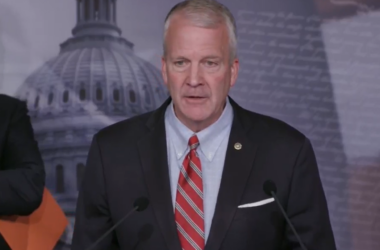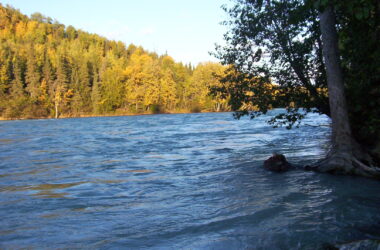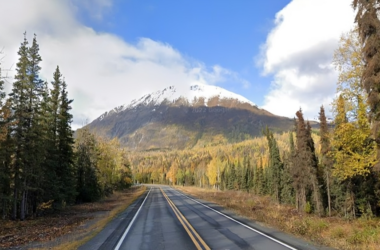For thousands of ENSTAR customers across Southcentral Alaska, a recent rate hike request sparked concern, confusion, and sticker shock. The utility filed with the Regulatory Commission of Alaska (RCA) to increase its base rates by 26.79%—a number that raised immediate alarms in a region already grappling with high heating costs and long-term uncertainty about natural gas supply.
But according to ENSTAR Natural Gas Company Communications Director Lindsay Hobson, that near 27% figure doesn’t apply to the full customer bill—only a portion of it.
“The part that’s going up is ENSTAR’s delivery charge—the cost for us to operate and maintain the system, not the cost of the gas itself,” Hobson explained in a phone interview with KSRM. “That charge only represents about 20% of what customers see on their bill. So the actual impact to the customer’s total bill is closer to 5%.”
Hobson said this distinction is often misunderstood when ENSTAR’s “rate” is referenced. While it’s true that the company is seeking a 26.79% increase to its base rate—the component that reflects operational expenses like maintenance, staffing, and infrastructure—it’s just one piece of the monthly total. The majority of what customers pay is determined by the cost of gas, which is handled as a direct pass-through to the consumer. ENSTAR doesn’t mark up that portion of the bill.
In a sample bill from April 2025, ENSTAR’s customer charge and service delivery charges totaled $55.07—roughly one-fifth of the full $286 monthly bill. The rest was attributed to the Gas Cost Adjustment (GCA)—the fluctuating market price of natural gas from producers.
Thus, when you apply the proposed 27% increase to that $55 portion, the jump is roughly a $15 rise—not a hike on the full $286.
Still, bills are rising. In a separate filing, ENSTAR submitted its annual GCA under TA355-4, which proposed a significant increase to the cost of gas itself due to recent shifts in pricing and supply. If both the base rate and the GCA increase are approved, customers could see a combined impact of up to 14% on their total bill.
Cook Inlet Woes: A Shrinking Basin, Rising Costs
Behind ENSTAR’s filings lies a deeper and more urgent issue—Southcentral Alaska is running out of easy gas.
The Cook Inlet basin, long the primary source of natural gas for utilities like ENSTAR, Homer Electric Association, and Chugach Electric, is experiencing production decline and increasing extraction costs. Producers, including Hillcorp and Furie Operating Alaska, have warned regulators that existing infrastructure and capital constraints make it increasingly difficult to meet long-term supply demands.
ENSTAR recently signed a new multi-year contract with Furie, filed under TA349-4, which reflects the mounting costs. The new rate locks in purchases at $12.31 per thousand cubic feet (MCF)—a substantial jump from previous supply contracts, which hovered in the $8–$9 range.
In the filing, ENSTAR states:
“The updated GCA reflects the increasing cost of gas supply resulting from the execution of the Sixth Amendment to the Furie GSA (TA349-4).”
“That price is directly passed through to our customers,” Hobson said. “We do not profit off the cost of gas—we just pass it along. Our team negotiates year-round to get the best rates possible, but the market is tightening.”
Again, however, the effect is cumulative. When combined with the proposed rate increase to the company’s base delivery rate, customers may see the overall impact of up to 14% on their monthly bills.
And the issue isn’t unique to ENSTAR. A 2024 filing by Hilcorp flagged the need for expanded storage and production facilities. Meanwhile, small producers told the Northern Journal that they are on the verge of exiting the Cook Inlet altogether without direct support from the state.
Producers in Peril: “We’re Not Drilling Without Help”
The Furie agreement isn’t just a contract—it’s a warning bell.
Smaller gas producers in the Cook Inlet say the economic conditions for exploration and drilling are no longer sustainable. In the Northern Journal report by Nathaniel Herz, several operators warned that without state intervention, they would be forced to halt new projects altogether.
The article quotes Ed Kerr, president of Cook Inlet Energy, who called for state royalty relief and legislative incentives to encourage new production. Without those measures, he said, continued exploration may not pencil out.
“This is really about investment,” Kerr told Herz. “The current economic climate doesn’t support new wells.”
Meanwhile, larger operators like Hilcorp are taking measures of their own. In a separate filing, the company sought state approval to construct a new natural gas storage facility in response to growing supply concerns. If approved, the facility would act as a buffer—storing excess gas during low-demand months for withdrawal in winter.
In that filing, Hilcorp noted:
“Seasonal deliverability constraints and supply uncertainties have created a need for flexible, reliable storage options to serve utility load requirements.”
ENSTAR, which purchases gas from both Furie and Hilcorp, has long relied on year-round deliverability from Cook Inlet to serve its roughly 150,000 customers. But those days may be numbered without new investment and, potentially, new infrastructure.
Is There a Back-Up Plan?
For decades, the idea of a natural gas pipeline in Alaska has flickered in and out of political focus. In 2025, it’s getting a full-court press.
The proposed construction of a long-distance pipeline from the North Slope, which now has presidential attention, has offered renewed optimism to offset the presently bleak prognosis for Southcentral heating cost woes. The $43 billion Alaska LNG Project, which would pipe natural gas from Prudhoe Bay to a proposed liquefaction facility in Nikiski, recently received a boost from both federal and private interests. In May, Glenfarne Group LLC signed a binding agreement to lead the development of the long-stalled project, and President Donald Trump has publicly backed the pipeline’s construction.
In February, Trump formally threw his full support behind the pipeline, calling it a centerpiece of his administration’s energy strategy. During remarks to the press, he named the project among the “top-tier infrastructure priorities” of his second term, highlighting its potential for exports—and relief to Alaska residents.
Shortly after, Glenfarne Energy Transition LLC signed the agreement with the Alaska Gasline Development Corporation (AGDC) to develop and operate the project. Glenfarne now holds exclusive rights to permit, construct, and manage the project through completion.
In a prepared statement, AGDC President Frank Richards said:
“This agreement allows the Alaska LNG project to advance with the backing of experienced, LNG-focused infrastructure developers, while retaining Alaskan interests and public benefits.”
Though no groundbreaking has occurred, both AGDC and Glenfarne surge forward toward getting the project shovel-ready.
What It Means for Southcentral Alaska
For Southcentral utilities and ratepayers, the stakes couldn’t be higher. If the Alaska LNG pipeline becomes reality, it could supplement gas supply coming out of the Cook Inlet tremendously and lock in decades of more affordable, stable pricing for households in Anchorage, the Mat-Su, and the Kenai Peninsula.
ENSTAR’s Hobson was measured in her assessment.
“Ultimately, we’re hopeful,” she said. “Lower-cost supply options that improve reliability are always something we’re watching closely. But we can’t speculate on when or how those options might become available. Our responsibility is to plan with what’s in front of us.”
Still, the numbers are tantalizing. Gas from the North Slope is already state-owned, and analysts suggest that—with the right agreements in place—sales to utilities like ENSTAR could come at a fraction of today’s Cook Inlet market rates.
A 2022 study commissioned by AGDC projected delivered costs to Southcentral utilities at less than $7 per MCF—compared to the $12.31 ENSTAR now pays Furie under its latest contract. For the average residential customer, that’s the difference between stability and sticker shock.
A Company in Transition
Even as ENSTAR grapples with short-term rate adjustments and long-term uncertainty, the utility itself is still undergoing change. In 2022, ENSTAR’s parent company was sold to a Canadian investment firm for $800 million, a deal approved by the Regulatory Commission of Alaska in late 2023.
Though the company says the sale will not affect day-to-day operations or customer rates, critics have raised concerns about foreign ownership of key infrastructure—especially at a time when energy markets are in flux.
For now, ENSTAR remains the largest natural gas utility in the state, with more than 150,000 customers and the responsibility of keeping homes warm as the seasons turn.
What Comes Next
The May 31 ENSTAR filing includes updated cost projections, financial data, and supporting testimony explaining why the utility believes the increase is warranted.
Two weeks after the utility provider filed TA349-4 with the RCA, seeking the permanent rate increase, the Commission formally suspended the request for further review, placing it into a months-long investigative process. In the meantime, the commission allowed ENSTAR to implement an interim increase of 23.21%—but again, only on the company’s base delivery charges, which account for approximately 20% of the average customer’s bill.
Still, the broader issue isn’t about percentages—it’s about trajectory.
“We’re doing everything we can to keep costs as reasonable as possible,” said Hobson. “But sourcing reliable gas in the Cook Inlet is getting harder. We’re not immune to that.”
As customers face climbing bills and a colder-than-average forecast for the coming winter, ENSTAR is pointing to several options.
The company’s budget billing program is open for enrollment until the end of June, allowing households to average their total gas usage over the year and pay a consistent monthly amount—an appealing option for those on fixed incomes.
ENSTAR also maintains a list of weatherization tips on its website and provides information on heating assistance programs through state and federal partners. For some, efficiency upgrades and insulation improvements can make a noticeable difference in gas consumption, and thus, costs.
But none of these are structural fixes.
A Ticking Clock
That reality puts Southcentral Alaska on the clock. Unless new discoveries are made, or state money swoops in to aid smaller Cook Inlet developers—or unless the long-promised Alaska LNG pipeline becomes a reality—utilities like ENSTAR will likely have no choice but to continue passing along higher prices.
For now, the pipeline remains a possibility. Plans and international agreements are in place. Glenfarne is under contract. The White House supports it. The people, as ever, are waiting.
Whether gas flows from Prudhoe Bay to the Kenai Peninsula in time to prevent a supply crisis remains to be seen.
But one thing is certain: Alaskans are watching their bills, and asking what comes next.






